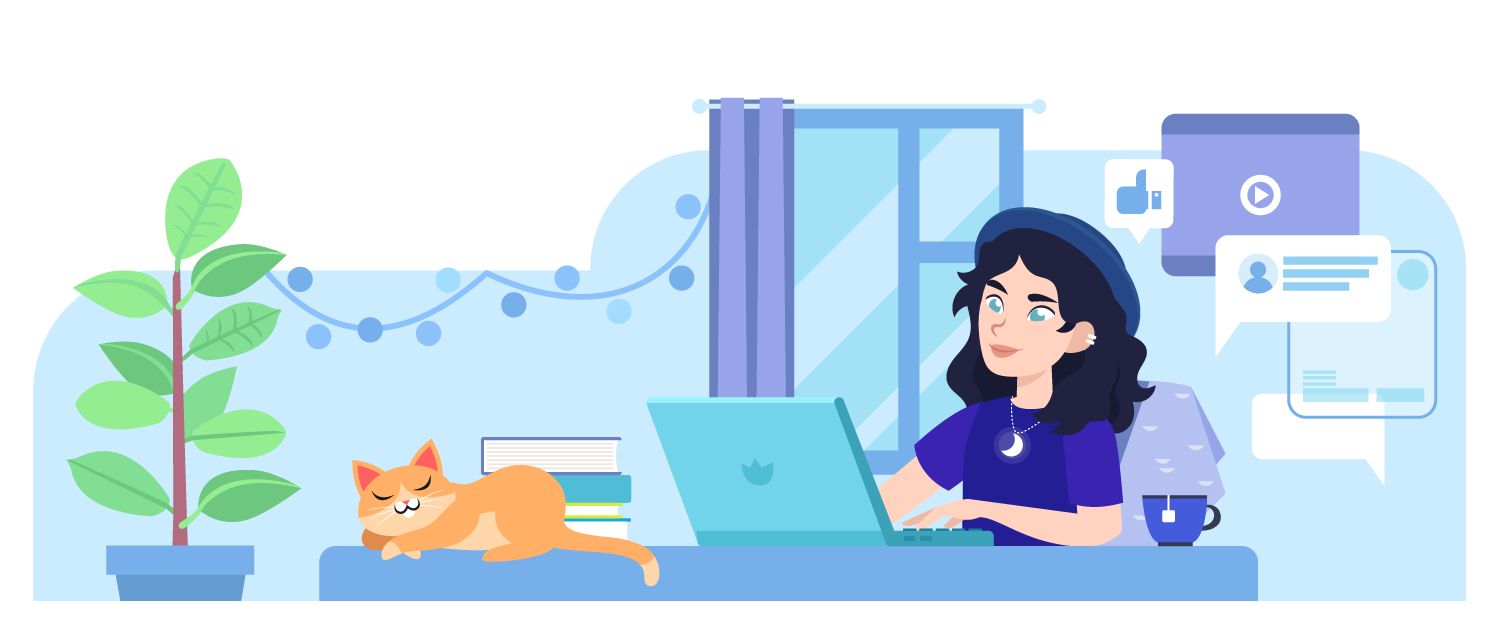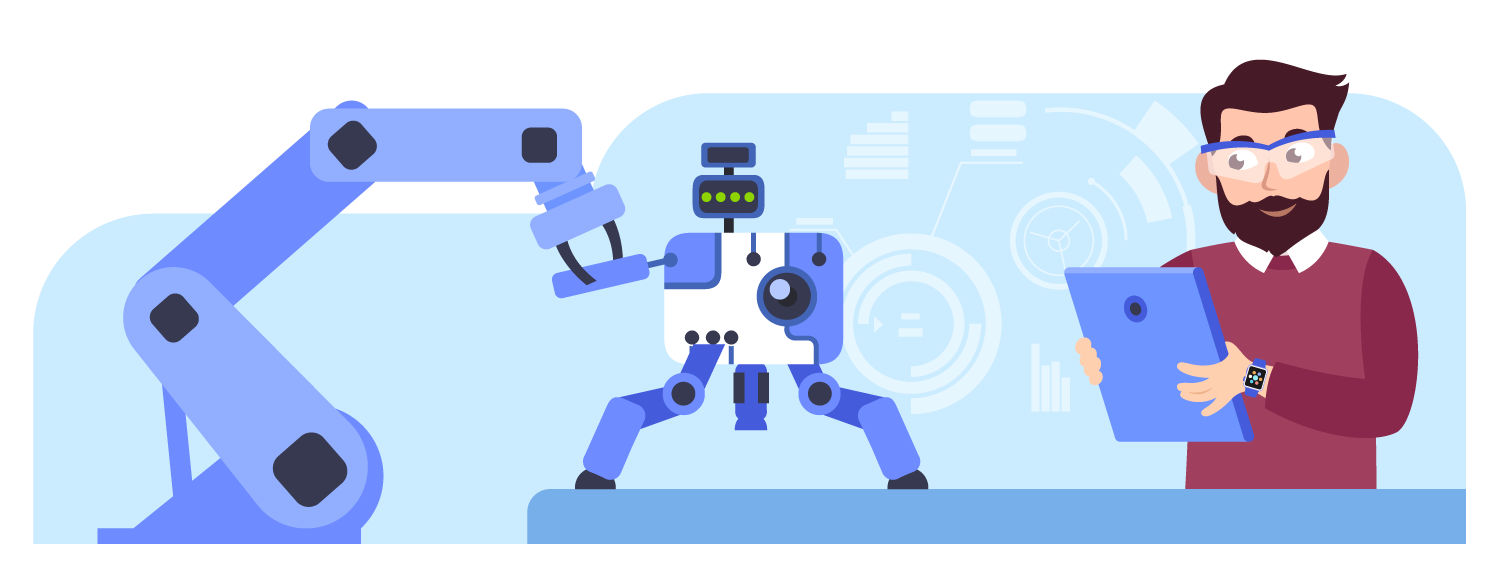- Where can you get knowledge besides tapes? From interstellar space?
- From books. By directly studying the devices. Thinking.
A. Azimov. Profession (1957)
In 2020, the whole world seemed to be temporarily in a test mode of one of the dystopian scenarios of the future. Everything that could not be postponed or suspended had to be changed: work schedule, leisure time, school activities. The children became like Margie, the heroine of Isaac Asimov's story: they were sad and thought about how much fun it was in schools before.

It seems that education will never be the same again. For the new academic year, teachers are preparing mixed online and offline training programs, and some educational institutions are switching to a completely remote mode.
The mistakes of the abrupt transition to distance learning are still fresh in the minds of teachers, students and their parents. More than 85% of university teachers consider the remote format to be worse than the full-time format, and 78% of school teachers note that with the transition to distance learning they have more jobs.
Even before the forced distance learning, many were skeptical about online education: 55% of adults already had a bad experience of taking courses on the Internet.
Having made sure that it is impossible to replace live communication between teacher and students with each other, we can take a closer look at what can only be obtained online, and imagine what education could be in the future.
Education will be interactive
The interactivity of education is one of the main keys to its effectiveness. Classes at school are built on constant interaction between the teacher and the student, which allows you to maintain the child's motivation.

Nowadays, online educational products are faced with a difficult task - to create effective mechanics of involvement in the educational process and make sure that the student's interest does not disappear. Online assignments cannot be limited to automatic tests with “yes” and “no” answers. Now and in the future, a fascinating dialogue and interaction should be built between the student and the system: explaining a new topic, repeating and consolidating the material. Interactive learning formats and gamification help in this.
Gamification has already been implemented in many areas: retail, human resources and education. It is actively used for business training and performance evaluation. Currently, gamification mechanics are actively beginning to implement and educational projects are formed on the basis of games for the implementation of educational strategies, including in the largest universities in the world. For example, Microsoft recently announced new Minecraft: Education Edition esports worlds and lessons .
In education, for a long time, in a sense, there are elements of the game: good and bad marks for completing a task as points in completing a quest. And at the end of the next academic year, everyone has a Level Up - a transition to the next level of complexity.
In online projects, gamification is much more complex. Originally built programs, combined, for example, with a detective story, make the learning process exciting - children want to return to classes regularly and learn new things. For completing tasks, achieving goals, like in a computer game, they can receive points, points, additional rewards and discover new levels.
The theoretical knowledge that students receive in the lesson, they can immediately apply when passing game tests. It helps children to look at knowledge and learning in general from a completely different angle.
The main benefit of gamified online learning is motivation to learn. The student can see and independently evaluate his progress and achievement of the set goals. This helps to develop qualities such as independence, responsibility and decision-making skills. For example, a study by the University of California, Irvine found that students who participated in an educational esports program performed much more impressively.
Learning will be helped by gadgets
Teachers note that children learn electronic services much faster and more efficiently than adults. Today's schoolchildren are familiar with gadgets from birth, are able to type text before they learn to write, and also instantly intuitively adapt to any electronic device. The use of familiar and even favorite devices allows students to get even more involved in the learning process: look for different definitions of new terms, look at details about a curious fact, look for the exact translation of a foreign word, and teachers learn more about students.

Today, more and more students and teachers are using video conferencing systems, electronic educational platforms, books, textbooks, manuals, and other applications that help in their studies.
Most of the interactive lessons and courses can be easily completed on a smartphone or tablet. Gadgets are gradually becoming not the teacher's enemy, distracting the child from classes, but an assistant. With the help of them and interactive online tasks, teachers make lessons more diverse, visualize information.
Smartphones are now available to a large portion of the world's population, in the future, perhaps to a majority, even in the least developed countries. Technology diffusion and cheapening, UNESCO notes , "provides marginalized people and communities, people with disabilities, refugees, out-of-school and those living in isolated communities, with access to appropriate learning opportunities."
Education will be remote partly
In March, schools around the world switched to distance learning. And it became clear: in theory everything sounded clear and easy, in practice the majority turned out to be not ready for this.
China has become the first and undisputed leader in the rapid transition to online education.
In just a few weeks, specialists managed to develop and launch the largest online platform for distance learning. At the same time, 50 million students from different regions of the country can use it for free.
Today's experience shows that the online learning format is becoming an integral part of the classical school, while completely distance education is impossible: live contact is still necessary. Most likely, in the future, the ratio of offline and online will change: it will be more effective to entrust some things to a computer - for example, checking homework. According to a UNESCO report , approximately 60,000 schools in China have already implemented machine learning for essay grading, with the algorithm grading 92% the same as the teacher's.
Education will be individual
Big data is already helping to solve the most important problems today. For example, machine learning algorithms, based on the data obtained on the student's successes and failures, have learned to build individual trajectories for studying school subjects and not only.

Artificial intelligence can analyze how much time a child spends studying, how long he does homework, where he makes mistakes most often, and measure real knowledge. Based on this, the student can be selected personal exercises aimed at developing his skills and improving performance. Online learning helps to find an individual approach to education, to the characteristics and abilities of each child.
On Indian platform Byju's, the largest EdTech project in the world, educational assignments are presented in the format of animated flashcards and exciting "live" tests. Also, for each student, his own learning path is built, which reflects the path that he went through and the time he spent on the solution.
On the educational online platform Uchi.ru, which is used by more than 8 million Russian schoolchildren, the student's experience is maximally individualized in terms of the time required to study the material, the required number of repetitions and sequence of tasks, and the level of complexity. This has proven to increase educational outcomes.
Many EdTech projects are aimed at helping not only students, but also teachers: reallocate time from routine tasks to creative and individual approach. The teacher has at the disposal of the teacher an automatic check of assignments, as well as constant monitoring and analysis of progress. For example, the British project Century is designed to inform teachers about the success of each student and give recommendations on how to build further work.
Experts say data-driven individualization is poised to take it a step further in the very near future. Systems will learn to select and recommend courses, assignments, and even different methods, not only based on how the student copes with the program. Perhaps, recommendations for training will be made based on the interests of the child, his favorite sports, computer games, past or upcoming trips and travels, as well as social skills. The British project ClassCharts , for example, already offers an optimal seating plan for students in the classroom, guided by the analysis of the data obtained. Artificial intelligence analyzes students' abilities and performance, how they interact and influence each other, and also looks for optimal work patterns in pairs and groups.